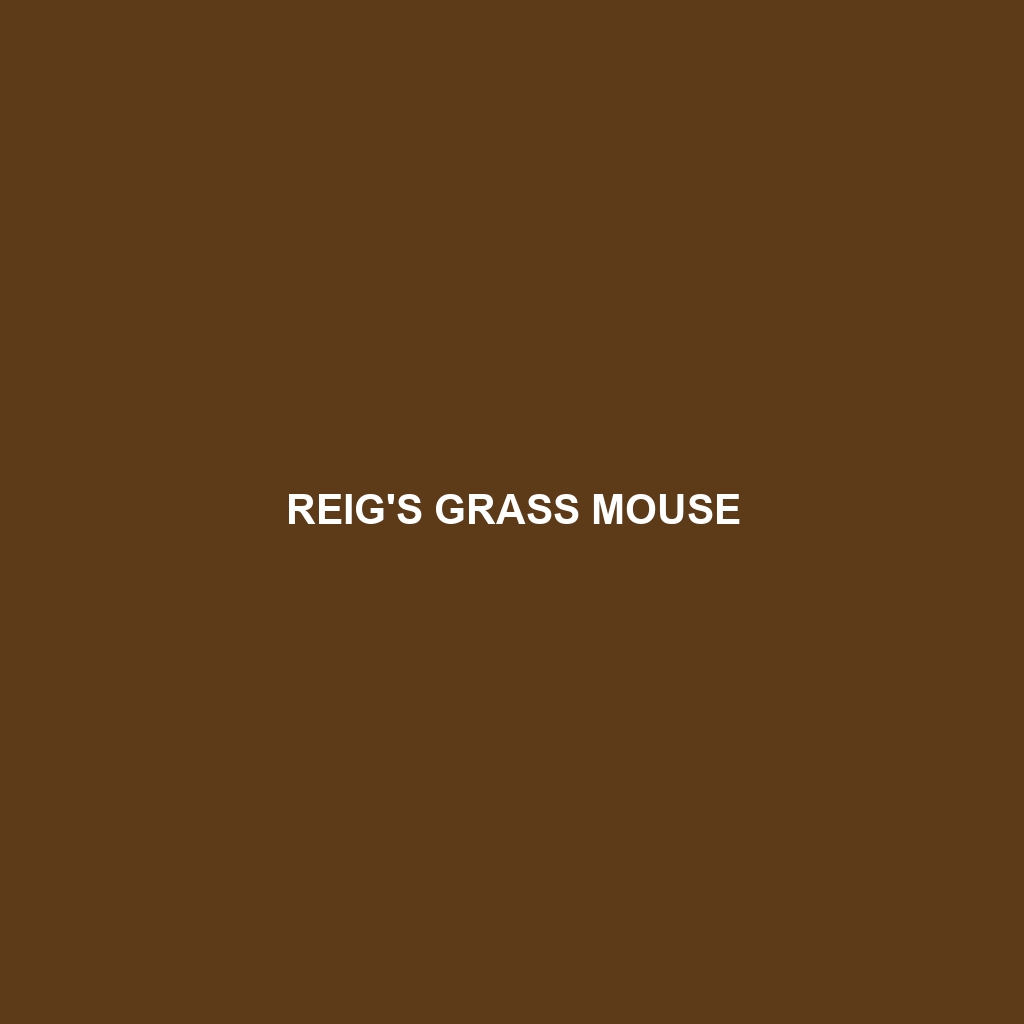Species Description: Reig’s Grass Mouse
Common Name: Reig’s Grass Mouse
Scientific Name: Akodon reigi
Habitat: Reig’s Grass Mouse is primarily found in the grasslands and shrublands of the central and southern regions of South America, specifically in countries like Argentina, Bolivia, and Paraguay. These environments typically include dense grasses and low-growing vegetation, providing essential cover and foraging opportunities for this species. As a habitat specialist, Reig’s Grass Mouse prefers areas with moist soils where it can build extensive burrow systems.
Physical Characteristics: Reig’s Grass Mouse is a small rodent, typically measuring between 8 to 12 centimeters in length, excluding its long tail, which often adds another 7 to 10 centimeters. Its fur is generally a mix of brown and gray shades, blending seamlessly with its grassy habitat, which aids in camouflage. Distinctive features include large ears, a pointed snout, and long, sturdy hind feet, which enhance its agility in navigating through dense vegetation.
Behavior: This species exhibits nocturnal behavior, primarily becoming active during the night. Reig’s Grass Mouse is known for its burrowing abilities, creating complex tunnel systems that serve as a refuge from predators. Socially, these mice tend to be solitary, though they may be seen interacting during mating season. They are also proficient climbers and can often be found foraging on elevated vegetation.
Diet: Reig’s Grass Mouse is primarily herbivorous, with a diet consisting of seeds, roots, and various grasses. During seasons with abundant food, they may also consume insects to supplement their diet. Their foraging habits are highly adaptable, allowing them to exploit a variety of plant materials, which is essential for their survival in fluctuating environmental conditions.
Reproduction: The breeding season for Reig’s Grass Mouse typically occurs during the warmer months, peaking in spring and summer. Females usually give birth to litters ranging from three to six offspring after a gestation period of around 25 days. These young are born blind and hairless but quickly develop, becoming independent within a few weeks. The species demonstrates a strong maternal instinct, with the mother often constructing cozy nests to raise her young.
Conservation Status: Currently, Reig’s Grass Mouse is classified as vulnerable due to habitat loss stemming from agricultural expansion and urban development. Conservation efforts are crucial to preserving the species’ habitat and ensuring its survival.
Interesting Facts: Reig’s Grass Mouse is noted for its ability to communicate through a series of vocalizations and scent markings. It plays a significant role in seed dispersion within its ecosystem, contributing to plant diversity and promoting healthy grassland environments.
Role in Ecosystem: As a herbivore, Reig’s Grass Mouse plays a critical role in the food web, serving as prey for various predators, including birds of prey, snakes, and foxes. Additionally, by feeding on seeds and plants, this species aids in maintaining the balance of plant communities, promoting soil health, and facilitating seed germination.
